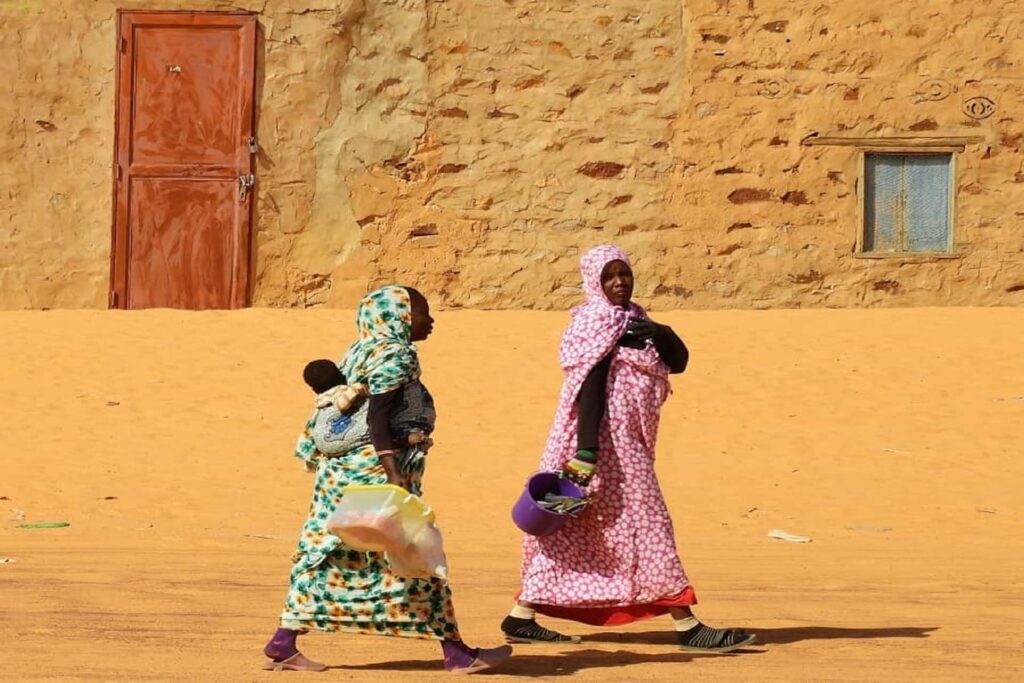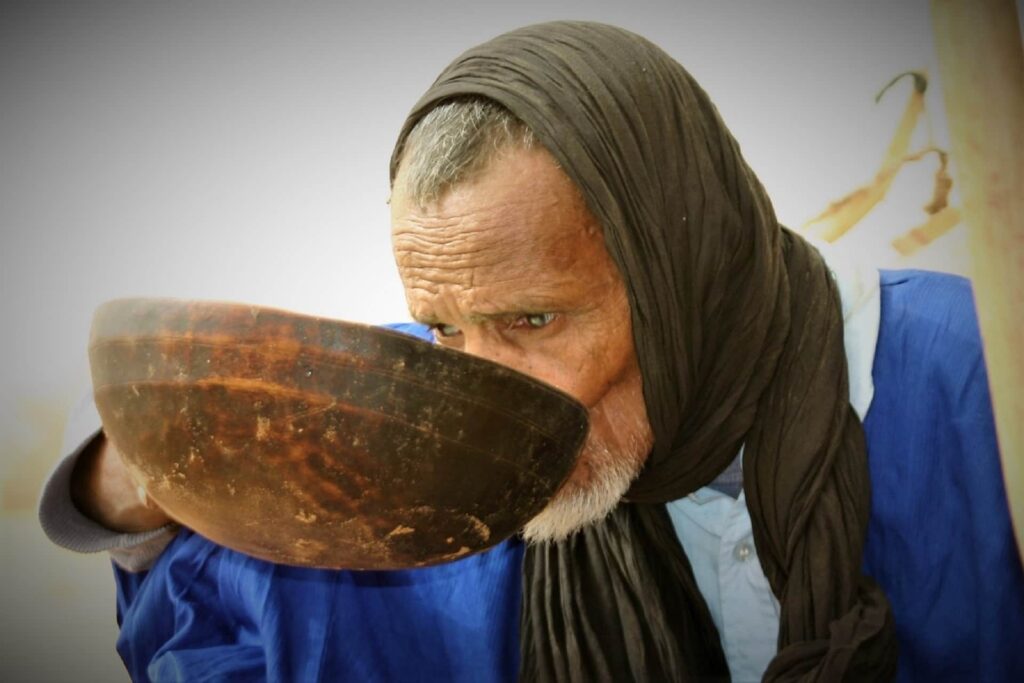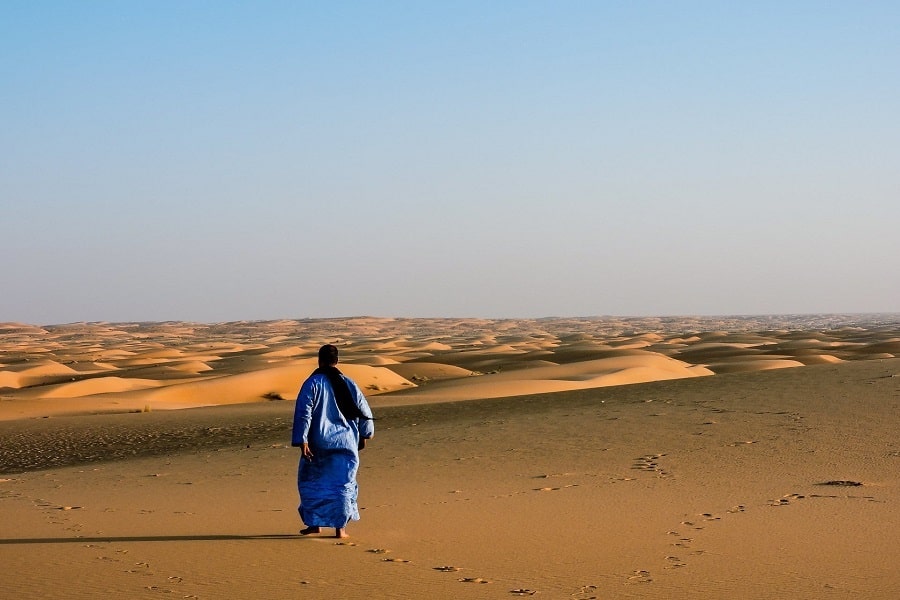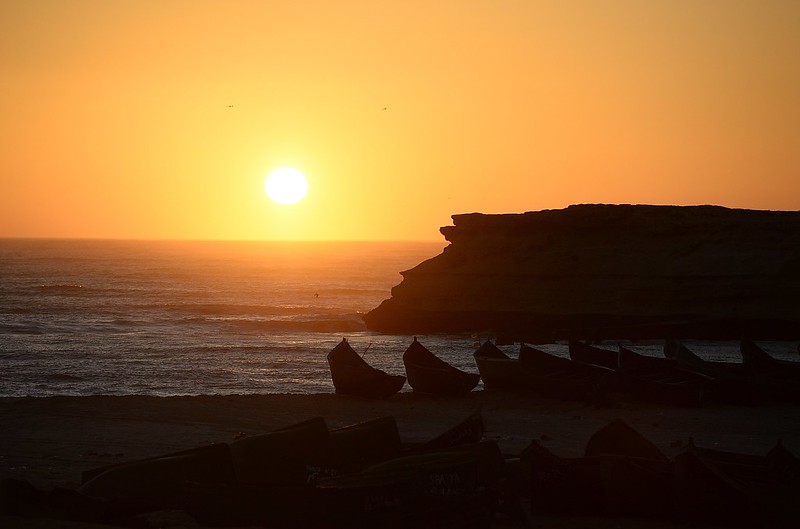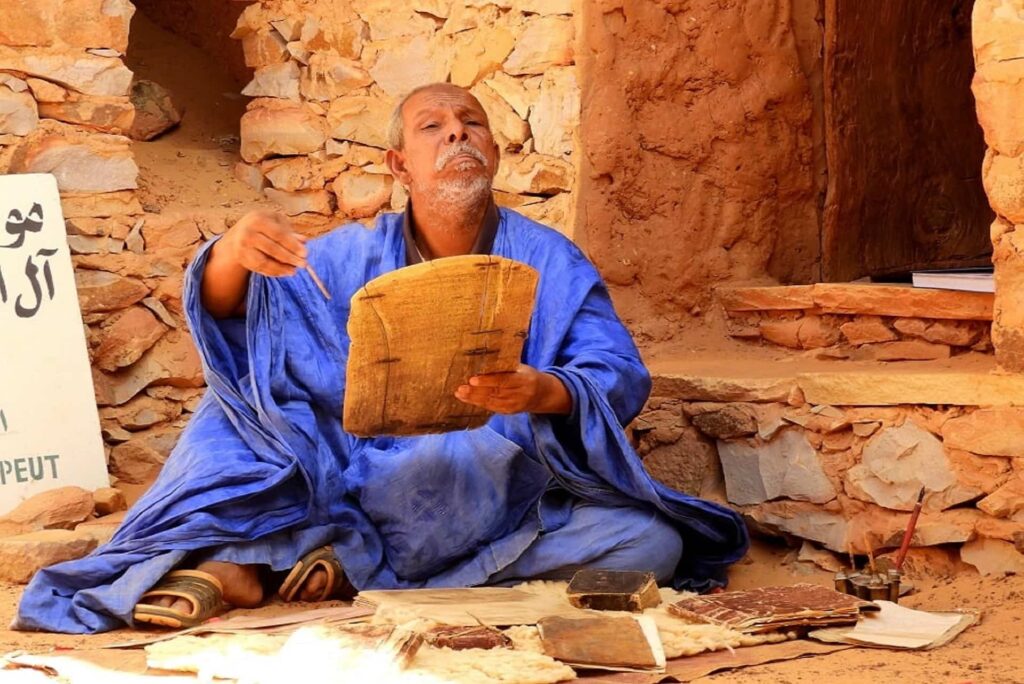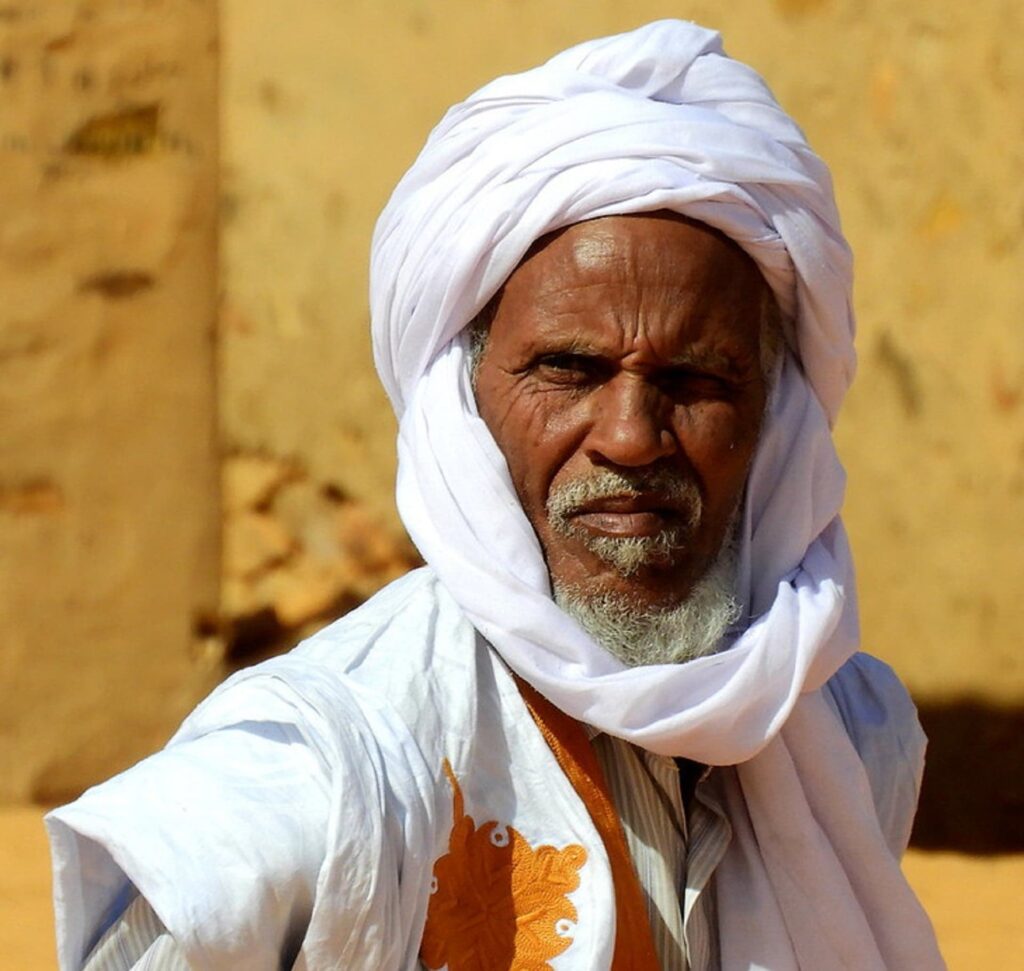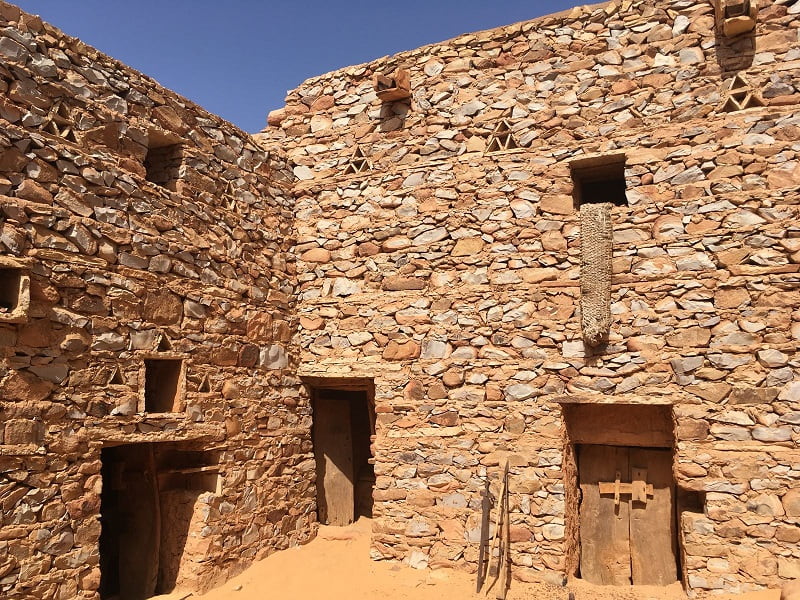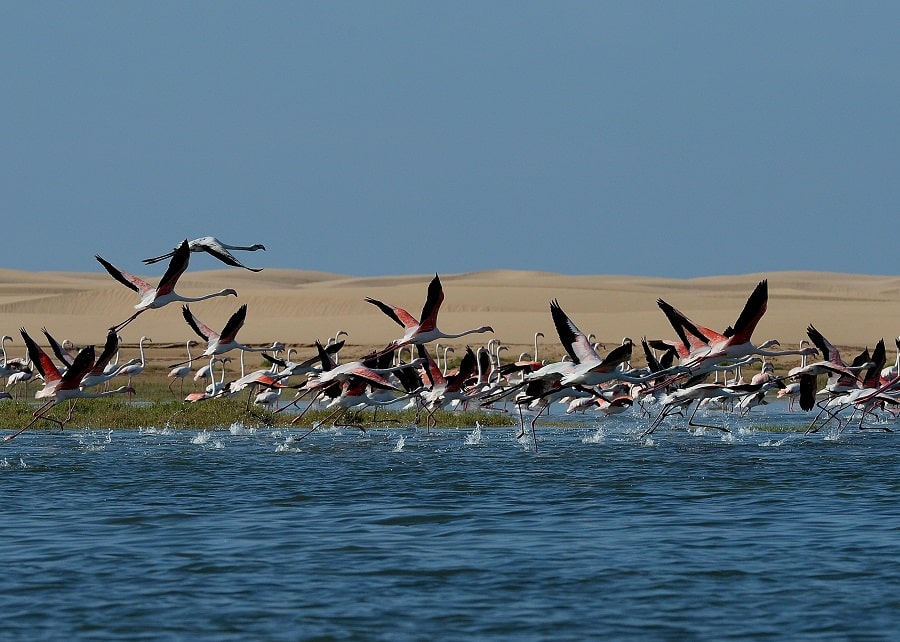ISLAMIC REPUBLIC OF MAURITANIA
Area: 1.030.700 km2
Population: 4.005.475 (July 2020 est.)
Life expectancy: about 64 years
Capital: Nouakchott
Borders: Morocco to the north, the Atlantic Ocean to the west, Senegal to the south-west, Mali to the south and east, and Algeria to the north-east.
Ethnic groups: Moors 70%, Fulani, Soninke, Wolof, and Bambara
Religion: Muslim (official) 100%
Languages: Arabic (official and national), Pular, Soninke, Wolof, French
Vaccinations: Malaria prophylaxis: absolutely recommended.
Visa: required. Visa available upon arrival.
TERRITORY, CLIMATE AND SEASONS
About three quarters of Mauritania are desert or semi-desert. The desert has been expanding since the mid-1960s.
The vegetation belts, corresponding to the rainfall pattern, extend from east to west and go from the forest along the Sénégal river to the savannah in the southeast.
In the center and north of the country there is only sandy desert.
The climate owes its aridity to the northeastern winds, which blow constantly in the north and for most of the year in the rest of the country; the drying effect produced by these winds is enhanced by the harmattan, a hot, dry wind blowing from the northeast or east.
Precipitation is essentially due to rain-carrying south-westerly winds, which progressively spread across the southern half of the country in summer.
HISTORY
III-VII century AD, Berber and Arab migrants arrive in modern day Mauritania.
9th-10th century, the Ghanaian Empire has its capital in present-day southwestern Mauritania.
1076 Almoravid Berber warriors defeat the Empire of Ghana.
1500 European sailors and traders establish settlements.
1850-60 French forces gain control of southern Mauritania. In 1898 France won the loyalty of the Moors in the region.
1904 France establishes Mauritania as a colonial territory.
1920 Mauritania becomes part of French West Africa and is administered by Senegal.
1946 The country becomes French overseas territory.
1958 Mauritania becomes autonomous.
1960 November, Mauritania becomes independent.
1976 Mauritania and Morocco split the Spanish Sahara, now known as Western Sahara, after Spain leaves. The guerrillas of the Polisario front, with the aim of establishing an independent state in the territory, fight the forces of both countries.
1978 The first post-independence president, Moktar Daddah, is overthrown in a military coup, supported in part by pressures from the Polisario campaign.
1979 Mauritania signs a peace agreement with the Polisario front and renounces the claim of Western Sahara. Morocco annexes the previous share of Mauritania’s territory.
1984 Coup d’etat brings Colonel Maaouiya Ould Sid Ahmed Taya to power.
1989 Racial unrest breaks out in Mauritania and Senegal after a border dispute. Tens of thousands of black Mauritanians are driven out of the country to Senegal. Others become the target of attacks and land grabs. Hundreds of people are killed.
1992 Colonel Ould Taya is elected president.
1997 President Ould Taya is re-elected in an election boycotted by the main opposition parties.2003 June – Attempted coup: Troops loyal to President Ould Taya regain control of the capital after heavy fighting with rebel soldiers.
2003 June, coup attempt: troops loyal to President Ould Taya regain control of the capital after heavy fighting with rebel soldiers.
2003 November, President Ould Taya re-elected with 67% of the votes in the first round of the elections. The opposition denounces the fraud.
2004 September, the government says it has foiled a coup – the third in 15 months. In October, President Taya accuses Libya and Burkina Faso of financing recent coup attempts.
2005 January, the UN asks for food aid in the wake of the locust invasions in 2004. Mauritania was the most affected African country, with its agricultural production reduced to zero.
2005 August, with President Ould Taya out of the country, troops seize government buildings and a group of officers announce the overthrow of the president and the formation of a military council.
2006 June, voters in a referendum approve constitutional changes that will limit the president to two five-year terms.
2007 March, Presidential elections won by Sidi Ould Cheikh Abdallahi.
2008 August, the army overthrows President Abdallahi – the country’s first democratically elected leader – and forms a council of state to govern the country. The move came after the president tried to fire several army commanders.
2009 July, General Mohamed Ould Abdel Aziz – leader of the August 2008 military coup – wins the presidential election.
2010 April, Mauritania, Mali, Niger and Algeria establish a joint command to counter the threat of terrorism.
2013 December, President Ould Abdel Aziz’s Union for the Republic party wins a majority of seats in the first parliamentary elections since 2006. The vote was boycotted by most opposition groups.
2014 June, President Ould Abdel Aziz wins another five-year term in elections boycotted by the opposition.
2014 July, France announces the establishment of a long-term military operation aimed at preventing jihadist groups from establishing safe havens in the Sahel, including Mauritania.
2017 August, Voters in a referendum approve the president’s plan to eliminate the Senate and change the flag.

